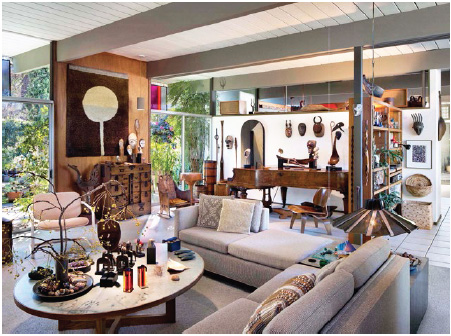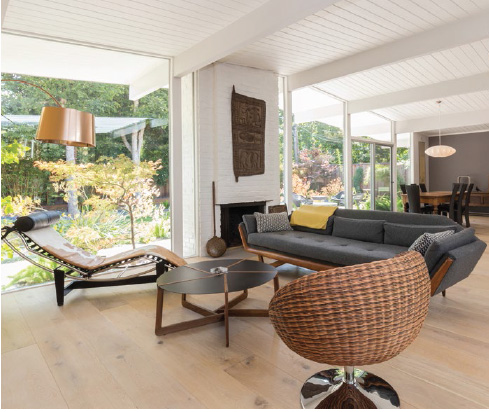Our Homes: Staged for Living - Page 2
 |
|
|
 |
|
|
 |
|
|
|
|
In a story packed with good advice about staging, much of the information actually applies whether you are selling or not. "When it comes to designing and decorating your modernist spaces, the basics include decluttering, cleaning, and letting in fresh air, paying special attention to the glass, since it's such a prominent feature of Eichler homes," Smithwick summarizes. "Dealing with organizing, lighting, furniture [style and placement], and color are also important. After that, it's finishing touches—art, texture, and textiles."
Another interior designer, Severine Secret of Go2 Design Studio in Saratoga, says clutter is especially a problem in the living room.
"Here, clutter makes the room feel messy. It makes it feel smaller," Secret warns. "Your eye needs to flow and to dance around the room in order to feel good, but that's not possible if it's constantly having to stop at every pile [of clutter]."
Another important principle of staging may be familiar to anyone who has experienced the challenge of dressing for a day in which you move through several of the Bay Area's characteristic microclimates. The solution, of course, is to dress in layers that can be added or removed as the weather changes. Just like you may want to wear a sweater and a windbreaker rather than a parka, interior lighting in your home should be 'layered.'
"Having one bright overhead light can cast unattractive shadows or images that are generally harsh and not particularly flattering," Padgett tells Smithwick. The designer recommends using eye-level lighting such as table lamps, adding, "The overall concept is layering your light sources, as opposed to having one primary source, and bringing your light down to user level."
Ultimately, the difference between the two main motivations for improved staging—living versus for sale—comes down to one of how personalized your home décor should be.
"Staging and designing for family purposes is the most personalized approach you can take," clarifies home stager Camila Baum. "You want to show off your items rather than hide them."
Alternatively, Baum says, "Staging for sale is all about depersonalizing, decluttering, and creating a minimalist, showroom-styled environment. When done well in Eichlers, it also draws attention to your home's architecture."
For more useful insights like these, check out Cathye Smithwick's 'Staged for Living' in our sneak preview of the Spring '18 issue of CA-Modern.




